Explore Loikaw - Myanmar Travel, Asia
Nestled in the heart of Kayah State, Loikaw is a hidden gem waiting to be discovered. For travelers seeking an authentic experience, this small yet culturally rich city offers a unique window into Myanmar’s lesser-known beauty. Located in Southeast Myanmar, Loikaw remains relatively untouched by mass tourism, making it an ideal destination for those looking to explore off the beaten path. From stunning landscapes to rich cultural traditions, Loikaw tourism promises visitors an enriching adventure where they can immerse themselves in the vibrant local life, breathtaking views, and historical landmarks.
Population: Approximately 51,000 in 2019.
Economy: Loikaw's economy is primarily based on agriculture, with rice, corn, and millet as main crops. Traditional crafts and tourism are also growing sectors, contributing to the region's economic development.
Landmarks: Famous for the Dhow Shipyard, Ras Al Jinz Turtle Reserve, and the Al Ayjah Lighthouse.
Myanmar
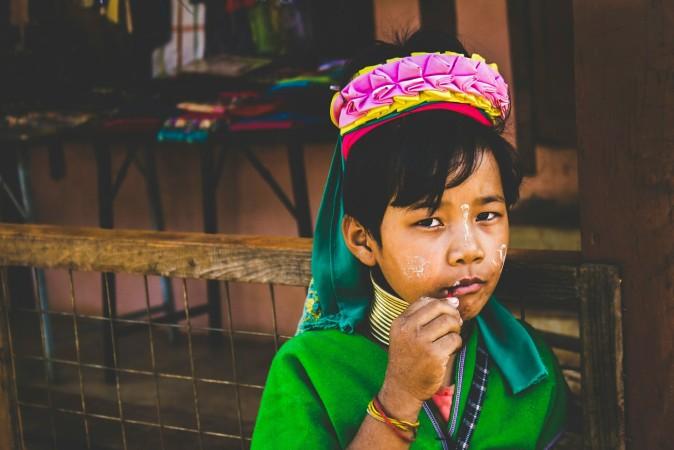
Overview of Loikaw
History & Cultural Influence
Loikaw’s history is deeply intertwined with the diverse ethnic groups that call this region home. The most notable of these are the Kayah people, also known as the Karenni, and the famous Kayan or “long-necked women,” who wear traditional brass coils around their necks. These communities have preserved their unique cultural traditions for centuries, offering visitors a rare chance to witness ancient customs in a modern world. The city itself is a blend of traditional and colonial influences. British colonization left its mark in the form of architecture, while the Buddhist culture of Myanmar permeates every aspect of local life. Many local festivals and rituals celebrate the spirits of the land, rivers, and forests, making Loikaw a truly mystical destination.
Interaction with the Locals
Loikaw, the capital of Kayah State, is home to a mix of various ethnic groups, with the Kayah, Kayan, and Karenni being the most prominent. These communities have rich cultural traditions, and many still practice their ancient customs and wear traditional attire. The people of Loikaw are known for their hospitality, warmly welcoming visitors to their homes and villages. Despite modern influences, the citizens maintain strong connections to their heritage, making Loikaw a culturally vibrant destination in Myanmar.
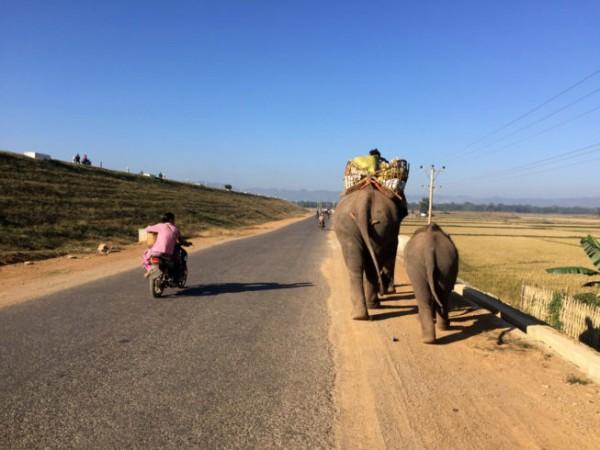
Elephant riding on a street at Loikaw - © Against the Compass
Top Attractions in Loikaw
Loikaw is brimming with natural beauty and cultural landmarks, offering visitors an immersive experience that combines stunning scenery with deep historical roots.
Taung Kwe Pagoda
One of Loikaw’s most iconic landmarks, Taung Kwe Pagoda (also known as the "Broken Hill Pagoda") is perched on top of a series of steep, jagged limestone hills. From the top, visitors are treated to panoramic views of Loikaw and its surrounding countryside, making it an ideal spot for sunrise or sunset photography. Beyond the breathtaking views, the peaceful atmosphere and spiritual energy of this Buddhist site offer a moment of reflection and tranquility.
Seven Lakes
The Seven Lakes (also known as "Htee Pwint Kan") is a hidden natural oasis , surrounded by rolling hills and lush greenery, the lakes are ideal for peaceful boat rides, nature walks, or simply unwinding in a serene setting. This picturesque spot is a favorite among locals for picnics and family gatherings, making it an excellent place to experience local life. The calm waters reflect the surrounding landscape, creating a postcard-worthy scene that invites visitors to slow down and enjoy the moment.
Pan Pet Village
This village is home to the Kayan people, specifically the renowned "long-necked" women who wear brass coils around their necks. Pan Pet Village offers a cultural immersion like no other, where visitors can learn about traditional Kayan customs, arts, and crafts. Pan Pet’s scenic setting, surrounded by mountains and rice terraces, adds to the village’s charm, making it not only a cultural but also a scenic highlight of Loikaw.
Demawso Market
To truly experience the heartbeat of Loikaw, a visit to Demawso Market is a must. This bustling market is where locals from surrounding villages gather to sell handmade crafts, fresh produce, and other local goods. Visitors can browse stalls loaded with colorful Kayah textiles, traditional jewelry, and other handmade items that highlight local artistry. Demawso Market is also the perfect place to try authentic Kayah dishes—sample the famous Kayah sausage, or indulge in local curries made with spices unique to the region.
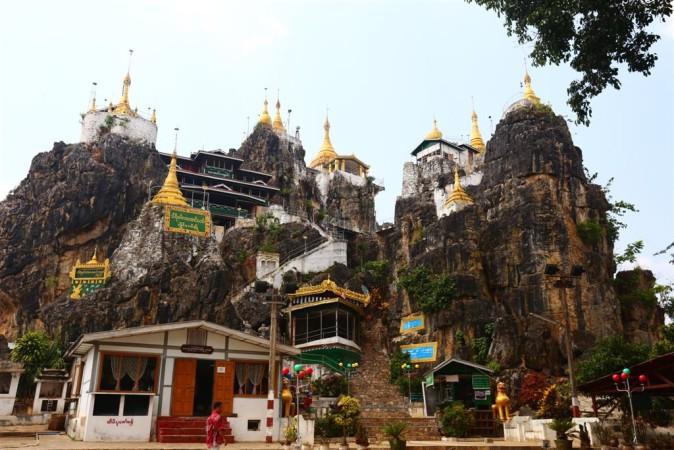
Taung Kwe Pagoda - © Myanmar.net
Must-Try Dishes in Loikaw
Loikaw's cuisine is a flavorful blend of traditional Kayah ingredients and cooking techniques, offering a unique dining experience that reflects the region's diverse ethnic groups.
- Kayah Rice Wine: Known as "Kaung Yay", this traditional rice wine is a must-try when visiting Loikaw. It’s commonly served during festivals and celebrations. The wine is made from fermented rice, and while it’s strong, it has a slightly sweet taste that pairs well with local dishes.
- Ngae Htoe Pauk: This is a traditional snack made from glutinous rice stuffed with a savory filling, usually featuring sesame or groundnut paste. The rice is then wrapped in banana leaves and steamed, making it a delicious and filling treat often found in local markets.
- Kayah Fish Soup: A hearty soup made with freshwater fish caught from nearby rivers or lakes. The soup is flavored with local herbs and spices, giving it a tangy and aromatic flavor. It’s often served with rice or as part of a larger meal.
- Vegetable Curries: Kayah curries are not limited to meat dishes. A variety of local vegetables are used to create delicious and flavorful curries, often spiced with turmeric, chili, and lemongrass. These curries are commonly served with steamed rice or traditional flatbread.
- Laphet Thoke (Tea Leaf Salad): This national dish of Myanmar is widely enjoyed in Loikaw as well. Laphet Thoke is made from pickled tea leaves, combined with crispy fried beans, peanuts, garlic, and sometimes dried shrimp, tossed together with lime juice and oil. It offers a perfect balance of textures and flavors—bitter, tangy, and crunchy.
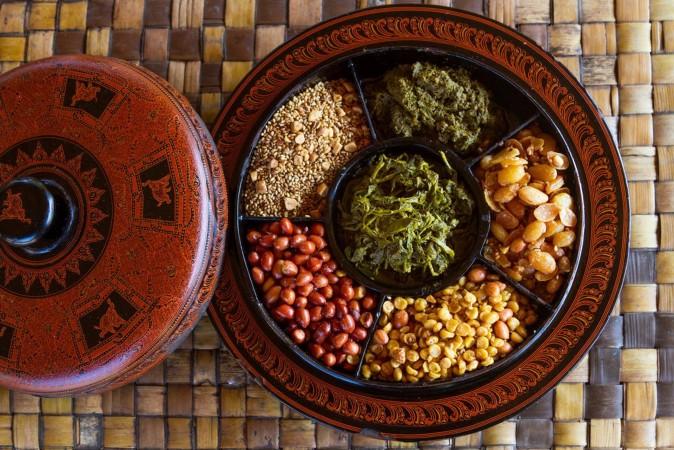
Laphet Thoke - © Plantrip Cha
Festivals & Local Celebrations
Loikaw is home to a variety of festivals that reflect the deep cultural and religious traditions of its diverse communities. Each festival is a vibrant representation of the region's uniqueness, providing visitors with a one-of-a-kind opportunity to experience local culture.
Kayah New Year (Kayah Khayae)
Celebrated in December, the Kayah New Year marks the beginning of a new agricultural cycle and is the most important festival in Kayah State. The festivities last several days, beginning with a large community gathering. Locals don traditional costumes, including colorful woven attire, and take part in ceremonial dances that represent prosperity and good fortune. These dances are often accompanied by traditional instruments like drums and gongs, creating a lively and energetic atmosphere. Visitors are welcomed to join in the festivities, enjoy traditional food, and participate in the communal spirit of celebration. It’s also a time for storytelling, where elders share ancient tales about their ancestors, connecting past and present.
Loikaw Buddhist Festivals
Throughout the year, Loikaw celebrates several Buddhist festivals, reflecting the strong Buddhist influence in the region. One of the most significant is Thingyan, Myanmar’s traditional water festival that marks the beginning of the New Year in April. During this festival, locals gather at pagodas to offer alms to monks and make merit for the coming year. It marks the end of the Buddhist Lent, and during this time, the city is illuminated with candles and lanterns, creating a magical atmosphere. Visitors can participate in lighting ceremonies at local temples and witness cultural performances that take place throughout the town.
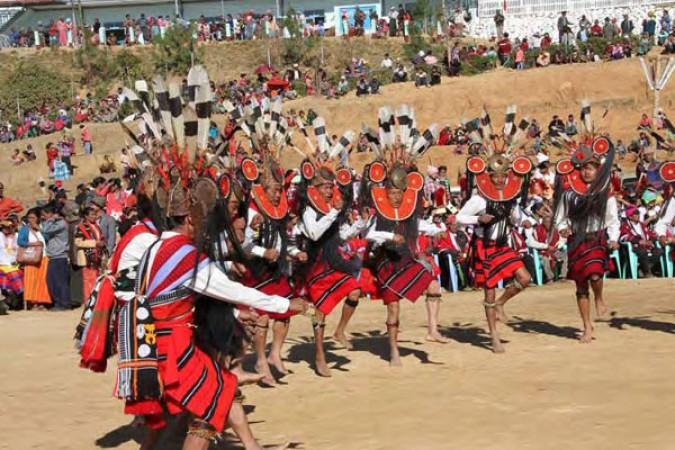
Kayah New Year - © Myanmar Ministry of Hotels and Tourism
What to Do in Loikaw
- Trekking in Loikaw: The Kayah hills surrounding Loikaw are perfect for trekking. Travelers can hike through the stunning landscapes, passing through traditional villages and enjoying panoramic views. Some treks lead to remote Kayan villages, offering an intimate look at the lives of the long-necked women.
- Boat Rides on Seven Lakes: Enjoy a leisurely boat ride on the peaceful Seven Lakes. Surrounded by lush greenery, it’s an ideal spot for relaxation and birdwatching. The calm waters and scenic environment make it a favorite among nature lovers.
- Cultural Tours: Explore Pan Pet Village and other ethnic villages through guided cultural tours. These tours provide opportunities to engage with locals, learn about their daily lives, and discover traditional crafts like weaving and pottery.
- Learning Traditional Crafts: Loikaw offers various workshops where visitors can learn Kayah weaving, make traditional Kayah jewelry, or even try their hand at pottery. These hands-on experiences are not only educational but also a way to connect with the local culture.
Shopping in Loikaw
- Handcrafted Product Stores: The Kayah people are known for their artisanal skills, especially in creating unique jewelry, textiles, and household items. Kayah textiles often feature intricate patterns, reflecting the cultural identity of the ethnic groups. These handwoven fabrics make for beautiful souvenirs.
- Traditional Jewelry Shops: Local markets offer a range of handmade jewelry that reflects the craftsmanship of the Kayah and Kayan people. These pieces are often made from natural materials such as silver, wood, and beads, with designs inspired by traditional patterns and symbols.
- Demawso Market: This bustling market is the best place to find local handicrafts, spices, and traditional foods. From woven baskets to Kayah sausages, visitors can find a wide array of locally produced goods. The market is also a hub for interacting with artisans and learning more about their craft.

Learning Kayah weaving with the locals - © Discovery DMC
Weather in Loikaw: Best Time to Visit
Loikaw enjoys a temperate climate that makes it an ideal destination to visit year-round, although certain seasons offer a more comfortable experience depending on the type of activities travelers are looking for.
- Dry season in Loikaw: Temperatures can rise above 30°C (86°F), making it quite hot and humid. This period is less ideal for outdoor activities but still manageable for those who prefer exploring Loikaw’s markets, restaurants, and cultural tours in the early mornings or late afternoons.
- Wet season in Loikaw: Monsoon rains dominate during these months, which can make travel to some rural areas challenging due to muddy roads. However, the lush, green landscapes are incredibly scenic during the rainy season, and fewer tourists mean you can enjoy a quieter experience.
- Best time to visit: The period from October to February is the most ideal time for tourists. During these months, temperatures range between 15°C and 25°C (59°F to 77°F), offering a pleasant climate perfect for exploring Loikaw’s outdoor attractions like trekking in the Kayah hills or visiting cultural sites.
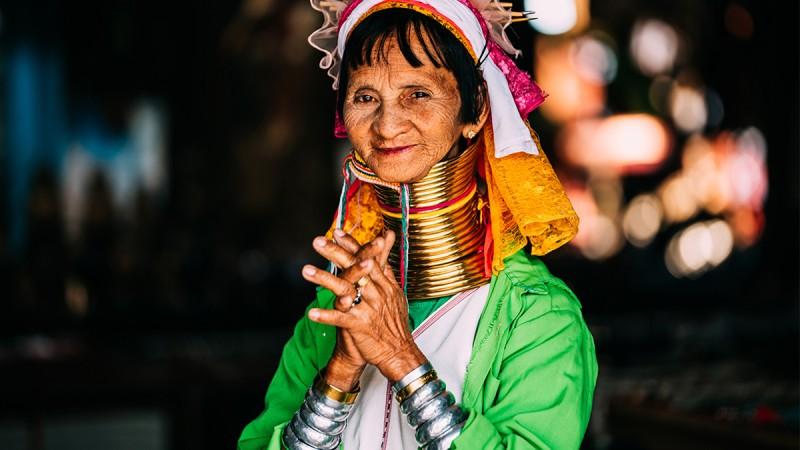
Travel and explore the life of the Kayan people - © Myanmar Ministry of Hotels and Tourism
Essential Travel Information
Getting Around Loikaw
- Airway: Loikaw has a small domestic airport with regular flights from Yangon and Mandalay. The flight from Yangon takes about 1 hour, making it the most convenient way to reach Loikaw.
- Local Transport: There are several bus services connecting Loikaw to Yangon and other major cities in Myanmar. Buses from Yangon typically take 12-15 hours, depending on the road conditions, while buses from Inle Lake take around 7 hours.
- Railway: Travelers can also take a scenic but slow train ride from Kalaw or Thazi to Loikaw. While the journey is long and less comfortable, the experience offers spectacular views of Myanmar’s countryside.
- Tuk-tuks: Tuk-tuks and motorbike taxis are the most frequent modes of local transportation, providing an enjoyable and cost-effective way to move around.
- Private cars: Private car hire is also an option for those looking to visit more remote attractions at your own pace, such as Pan Pet Village or the surrounding hills.
ATM & Banking Services
When visiting Loikaw, travelers should be aware that banking services can be limited, especially in rural areas. While there are a few ATMs in the city that accept international cards, it’s advisable to carry enough cash in Myanmar Kyat, as ATMs may occasionally be out of service. Currency exchange options are minimal, so it's recommended to exchange money in larger cities before arriving in Loikaw. Additionally, most local markets, guesthouses, and smaller establishments operate on a cash-only basis, with credit card acceptance being rare.
Where to Stay in Loikaw
- Guesthouses: For budget-conscious travelers, Loikaw has several guesthouses that provide basic amenities at affordable rates. These guesthouses are clean, simple, and often family-run, offering a cozy atmosphere and a chance to experience local hospitality.
- Boutique Hotels: For those looking for more comfort, boutique accommodations are available, offering well-furnished rooms, modern amenities like Wi-Fi, and serene surroundings. These places often provide scenic views and a quiet environment, perfect for relaxing after a day of exploring.
- Village stays: Travelers looking for a more immersive experience can choose to stay in eco-friendly lodgings located in traditional villages. These stays provide the opportunity to connect with local families, learn about village life, and contribute to sustainable tourism efforts in the region.
Articles for you

Explore Yala National Park - Sri Lanka Travel, Asia
Tucked away in Sri Lanka’s southeastern corner, Yala National Park is where wild nature meets deep tradition. Known worldwide for its leopard population, the park is also home to elephants, sloth bears, crocodiles, and hundreds of bird species. Beyond wildlife, Yala opens doors to a cultural landscape dotted with ancient temples, Buddhist ruins, and coastal villages. For travelers seeking more than just a safari, Yala offers a chance to explore eco-tourism, local communities, and sacred heritage sites.
Population: The Yala National Park area doesn’t have a human population.
Economy: The economy around Yala National Park thrives on a blend of eco-tourism, agriculture, and local services. Safari tours, eco-lodges, and cultural experiences drive steady income for nearby towns like Tissamaharama and Kataragama, supporting thousands of families.
Landmarks: Famous for Block I of Yala and wildlife encounters, including elephants, sloth bears, crocodiles, and exotic bird species.

Explore Galle - Sri Lanka Travel, Asia
Nestled on Sri Lanka’s southern coastline, Galle is a vibrant city where history meets the sea. Its cobbled streets, colonial architecture, and serene beaches make it a must-visit destination for travelers seeking a blend of culture, adventure, and relaxation. A UNESCO World Heritage site, Galle captivates visitors with its Dutch Fort, bustling markets, and friendly locals. Whether you’re exploring the ramparts at sunset or savoring fresh seafood by the shore, Galle promises an unforgettable journey into Sri Lanka’s heritage.
Population: Approximately 113,000 in 2023.
Economy: Galle’s economy thrives on tourism, trade, and fisheries. The city’s historic fort, colonial architecture, and coastal charm draw thousands of international visitors each year, making tourism its main economic driver. Fishing remains vital for local livelihoods, supplying fresh seafood across the region.
Landmarks: Famous for the Galle Fort, Dutch Reformed Church & Maritime Museum, and Unawatuna Beach.

Explore Bentota - Sri Lanka Travel, Asia
Nestled along Sri Lanka’s southwestern coast, Bentota is a tropical paradise that blends golden beaches, vibrant culture, and thrilling adventures. Famous for its calm waters, luxury resorts, and scenic river estuary, Bentota has become a top destination for travelers seeking both relaxation and authentic experiences. From serene beach walks at sunrise to adrenaline-pumping water sports, this coastal town offers a perfect balance of leisure and exploration. With its proximity to Colombo and Galle, Bentota is easy to reach, making it an ideal stop for both short escapes and extended holidays.
Population: Approximately 37,000 in 2023.
Economy: Bentota’s economy thrives mainly on tourism, which drives local businesses such as hotels, restaurants, and wellness retreats. The town also benefits from fishing, coconut cultivation, and handicrafts like wood carving and batik textiles. Many residents rely on the growing demand for water sports and Ayurvedic treatments, making tourism the backbone of both income and employment in the area.
Landmarks: Famous for Bentota Beach, Bentota River Safari, and Kande Vihara Temple.

Explore Mirissa - Sri Lanka Travel, Asia
Mirissa is a charming coastal town on Sri Lanka’s southern shoreline. Known for its golden beaches, turquoise waters, and vibrant marine life, it has become a must-visit stop for travelers exploring the island. Many come for whale watching, surfing, and sunset views at Coconut Tree Hill, but Mirissa offers much more than postcard beauty. The fishing boats you see anchored by the bay carry generations of stories. Local traditions, delicious cuisine, and a laid-back rhythm of life shape every visitor’s experience.
Population: Approximately 4,700 in 2023.
Economy: Mirissa’s economy is largely shaped by its coastal location. Fishing has long been the backbone of local livelihoods, with generations relying on the Indian Ocean for income. In recent decades, tourism has become the main driver of growth, thanks to whale watching, surfing, and beachside hospitality.
Landmarks: Famous for Mirissa Beach, Coconut Tree Hill, and Parrot Rock Bridge.

Explore Nuwara Eliya - Sri Lanka Travel, Asia
Tucked away in the Central Highlands of Sri Lanka, Nuwara Eliya is often called “Little England”. With its rolling tea plantations, cool misty mornings, and colonial charm, this mountain town feels like a step into another world. Travelers come here to breathe fresh air, walk through flower gardens, sip the finest Ceylon Tea, and enjoy a pace of life far from the island’s busy cities. Whether you’re drawn by scenic landscapes, heritage architecture, or the warmth of its people, Nuwara Eliya is a destination that blends nature, culture, and history in perfect harmony.
Population: Approximately 781,000 in 2023.
Economy: Nuwara Eliya’s economy thrives mainly on tea production, as it sits in the heart of Sri Lanka’s central highlands, famous worldwide for Ceylon Tea. The city also benefits from a growing tourism industry, attracting visitors with its colonial charm, cool climate, and scenic landscapes.
Landmarks: Famous for Gregory Lake, Hakgala Botanical Garden, and Victoria Park.

Explore Sukau - Malaysia Travel, Asia
Nestled on the banks of the Kinabatangan River in Sabah, Malaysian Borneo, Sukau is a destination where wildlife, culture, and conservation come together. Known as one of Asia’s top spots for river safaris and eco-tourism, this quiet village offers a front-row seat to encounters with Bornean orangutans, pygmy elephants, proboscis monkeys, and exotic birdlife.
Population: Approximately 1,400 in 2019.
Economy: Sukau’s economy is shaped by its riverine location and natural resources. Traditionally, the Orang Sungai community relied on fishing, small-scale farming, and forest gathering for their livelihood. Today, the village has shifted toward eco-tourism, with river cruises, jungle trekking, and homestays providing income.
Landmarks: Famous for the Kinabatangan River cruises, Gomantong Caves, and Ox-bow lakes and wetlands.
